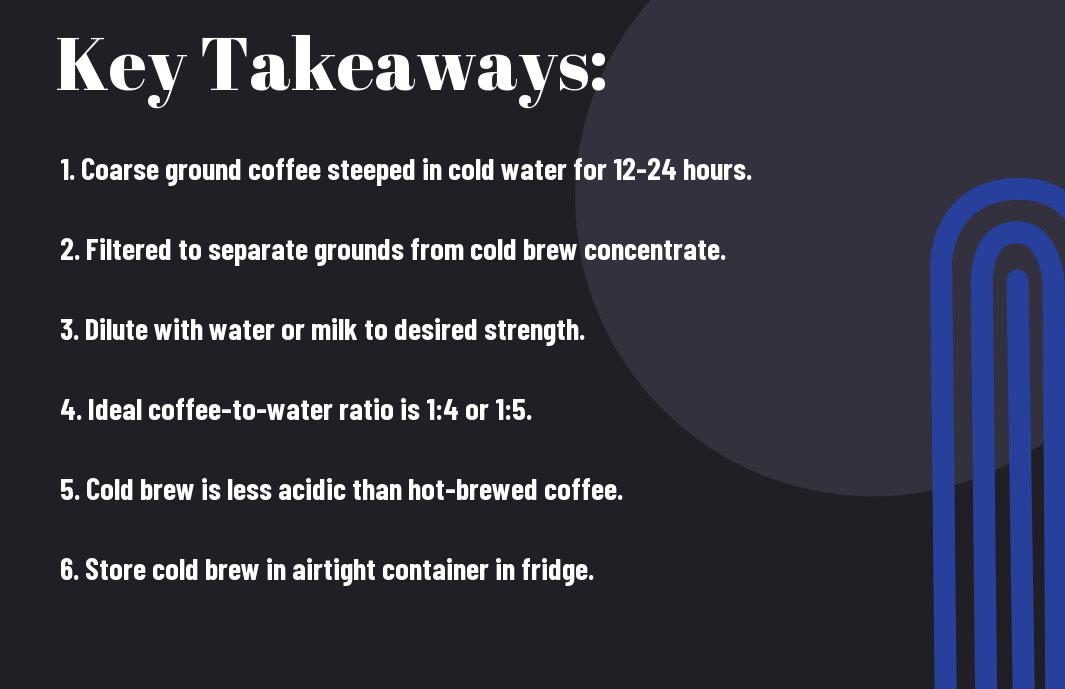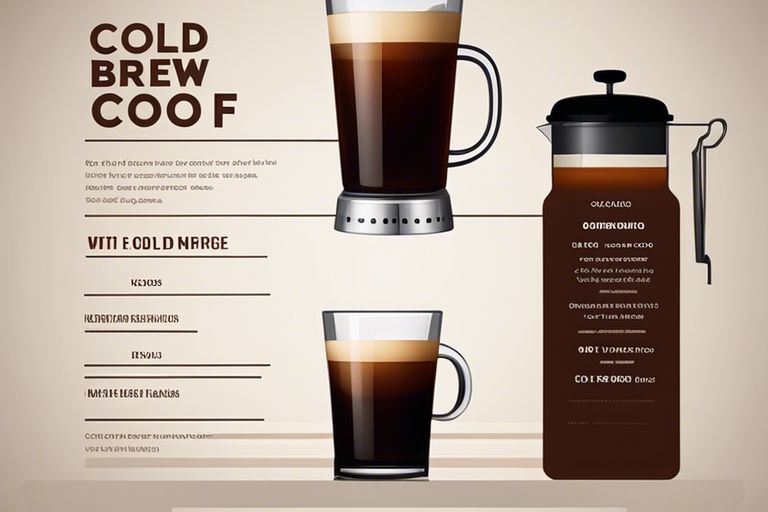Perfecting the art of brewing coffee is a task that requires precision and finesse. From selecting the right beans to mastering the brewing process, each step plays a vital role in achieving the perfect cup. In this guide, we will explore the important elements that go into brewing a flawless cup of coffee that will awaken your senses and elevate your coffee experience to new heights. Grab your favorite mug, and let’s look into the world of brewing perfection.
Key Takeaways:
- Quality beans: Utilize high-quality, freshly roasted coffee beans for a flavorful cup of coffee.
- Grind size matters: Adjust your coffee grind size to match your brewing method, ensuring optimal flavor extraction.
- Water temperature: Brew with water at the correct temperature (195-205°F) to extract the best flavors from your coffee grounds.
- Brewing time: Pay attention to the brewing time – too short or too long can impact the taste of your coffee.
- Experiment and enjoy: Don’t be afraid to experiment with different brewing methods and ratios to find your perfect cup of coffee. Embrace the process and savor the results.
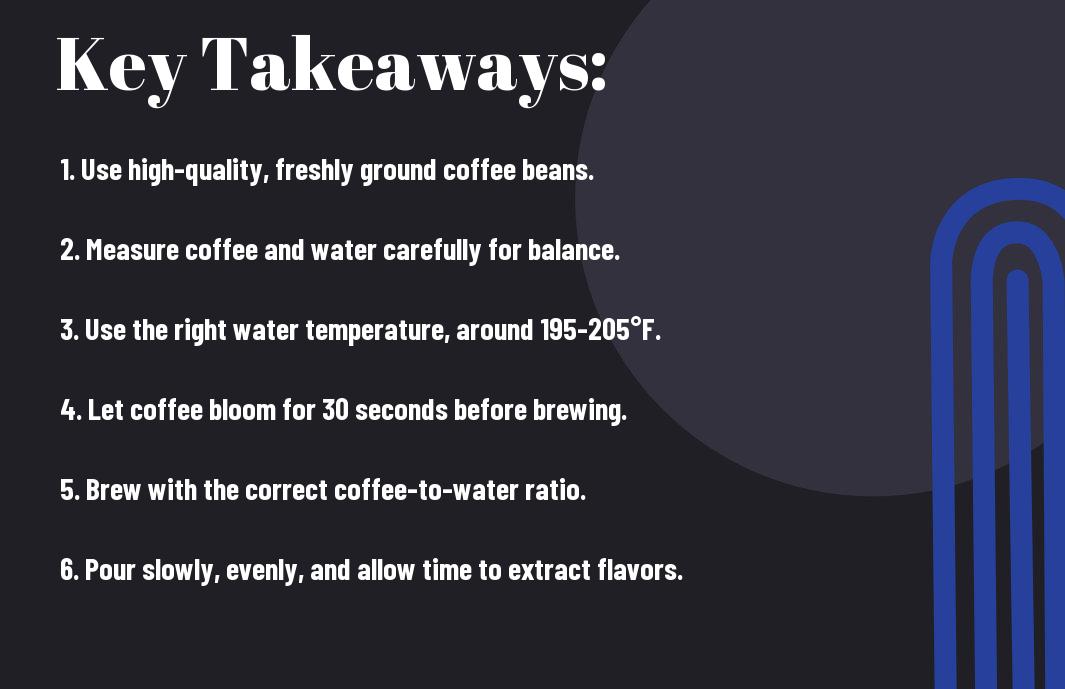
Choosing the Right Coffee Beans
Your journey to brewing the perfect cup of coffee begins with choosing the right coffee beans. The beans you select will greatly impact the flavor profile of your brew, so it’s crucial to choose wisely.
Selecting the Best Roast for Your Taste
Best start by considering the roast of the coffee beans. Roasts can range from light to dark, each offering a different flavor profile. Lighter roasts tend to be more acidic and showcase the unique characteristics of the beans, while darker roasts have a bolder flavor with more prominent notes of bitterness and smokiness. Choose a roast that aligns with your taste preferences to ensure a satisfying cup of coffee.
Considering the Origin and Quality of the Beans
One crucial factor to consider when selecting coffee beans is their origin and quality. The region where the beans are grown plays a significant role in determining the flavor profile. Different regions produce beans with distinct flavors, so exploring beans from various origins can lead to exciting taste experiences. Additionally, opt for high-quality beans to ensure a delicious and satisfying cup of coffee.
One thing to keep in mind is that coffee beans are typically categorized based on their quality. Specialty coffee beans are of the highest quality, grown in optimal conditions and meticulously processed to bring out the best flavors. Investing in specialty coffee beans can elevate your coffee brewing experience and result in a truly exceptional cup of coffee.
Grinding Your Coffee
Now, let’s talk about the crucial step of grinding your coffee beans. This step can make or break the flavor of your brew, so it’s important to get it right.
Why Freshly Ground Coffee Matters
Coffee beans start losing their freshness and flavor as soon as they are ground. By grinding your coffee just before brewing, you ensure that the maximum amount of flavor and aroma is extracted from the beans. This results in a more flavorful and satisfying cup of coffee that is worth the extra effort.
Choosing the Right Grinder for the Job
Grinding your coffee beans to the right consistency is necessary for a perfect cup of coffee. There are two main types of grinders to consider: blade grinders and burr grinders. Blade grinders are more affordable but can result in inconsistent grind sizes, affecting the taste of your coffee. On the other hand, burr grinders offer more precision and control over the grind size, leading to a more consistent and flavorful brew.
Your choice of grinder will depend on your budget and how much control you want over the grind size. If you’re serious about your coffee, investing in a high-quality burr grinder is the way to go for a truly exceptional cup of coffee.
Selecting the Perfect Brewing Method
After reading the insightful guide on How to Make the Perfect Cup of Coffee, the next crucial step is selecting the ideal brewing method. Different methods can affect the flavor profile and intensity of your coffee, so it’s vital to choose wisely based on your preferences.
Drip Brewing: The Classic Choice
The classic drip brewing method is a favorite among many coffee lovers for its simplicity and consistent results. This method involves hot water slowly dripping through a filter containing ground coffee, extracting the flavors and aromas along the way. Drip brewers are perfect for those who prefer a clean and smooth cup of coffee without much effort.
French Press: Rich and Full-Bodied
Press…
With its rich and full-bodied brew, the French Press method is perfect for those who enjoy a robust and flavorful cup of coffee. The process involves steeping coarse coffee grounds in hot water and then pressing them down with a plunger to separate the grounds from the liquid. This method allows for more oils and sediments to remain in the final brew, resulting in a bolder flavor profile that some coffee enthusiasts prefer.
Pour-Over: A Delicate Balance
Balance…
PourOver…

Measuring and Heating Water
Many believe that the key to brewing a great cup of coffee lies in the proper measurement and heating of water. Getting these elements right can make a significant difference in the final taste of your coffee.
The Importance of Water Temperature
| Temperature | Effect |
| Below 195°F (90°C) | Under-extracted, resulting in a weak and sour cup of coffee. |
| 195-205°F (90-96°C) | Ideal range for brewing, extracting the flavors perfectly. |
| Above 205°F (96°C) | Over-extracted, leading to a bitter and unpleasant taste. |
For the best results, aim for a water temperature between 195-205°F (90-96°C) when brewing your coffee. This temperature range ensures that you extract the optimal flavors from the coffee grounds without overdoing it.
Measuring the Right Amount of Water
Right measurements are crucial for brewing a consistent and delicious cup of coffee. Using too much or too little water can throw off the balance of flavors and strength in your brew.
The key to measuring the right amount of water is to follow the coffee-to-water ratio recommended for your brewing method. Typically, a general guideline is to use 1-2 tablespoons of coffee for every 6 ounces of water. However, you can adjust this ratio based on your preferences for a stronger or milder coffee taste.
The secret to a perfect cup of coffee often lies in the details, such as measuring the right amount of water. Finding the ideal balance between coffee grounds and water will help you achieve the desired flavor profile and strength in your brew.

The Brewing Process
Steeping Time: Finding the Perfect Balance
Finding the ideal steeping time is crucial in brewing the perfect cup of coffee. Steeping for too long can result in an overly bitter and astringent brew, while steeping for too short a time may yield a weak and under-extracted cup. The key is to find the balance that suits your taste preferences.
Agitating the Coffee Grounds for Optimal Extraction
With each method of brewing coffee, whether it’s pour-over, French press, or espresso, agitating the coffee grounds plays a significant role in the extraction process. Gently stirring or swirling the grounds helps ensure that all the coffee is evenly exposed to the water, promoting a more consistent and flavorful extraction.
Another important aspect to consider is the intensity of agitation. Depending on the grind size and brewing method, the level of agitation required may vary. Experimenting with different agitation techniques can help you fine-tune your brewing process and achieve the perfect balance of flavors in your cup of coffee.
Tips and Tricks for Perfection
To brew the perfect cup of coffee, it’s vital to pay attention to the little details that can make a big difference. Here are some tips and tricks to help you achieve coffee perfection:
Experimenting with Ratios and Times
With coffee brewing, ratios and times play a crucial role in determining the flavor and strength of your cup. Experiment with different coffee-to-water ratios and brewing times to find the perfect balance that suits your taste buds. You may discover that a slightly longer brewing time or a higher coffee-to-water ratio enhances the flavors and aromas of your coffee.
The key is to be patient and open to trying new combinations until you find the ideal ratio and brewing time that brings out the best in your coffee. Do not forget, practice makes perfect!
Storing Coffee Beans for Maximum Freshness
With coffee beans, freshness is key to achieving a delicious cup of coffee. Store your coffee beans in an airtight container in a cool, dark place to preserve their freshness and flavor. Avoid storing them in the refrigerator or freezer, as moisture can deteriorate the quality of the beans.
Coffee beans are best when used within two weeks of roasting, so try to buy smaller quantities frequently to ensure that you’re brewing with the freshest beans possible. Your taste buds will thank you for it!
Cleaning Your Brewing Equipment
With coffee brewing, cleanliness is vital to maintaining the quality and flavor of your coffee. Regularly clean your brewing equipment, including the coffee maker, grinder, and filters, to prevent any buildup of oils or residue that can affect the taste of your coffee.
Freshness is key when it comes to brewing the perfect cup of coffee. By following these tips and tricks, you’ll be well on your way to brewing a delicious and satisfying cup every time.
Final Words
On the whole, crafting the perfect cup of coffee is a delightful art that can be mastered with practice and attention to detail. From selecting the right beans to perfecting the brewing technique, each step plays a crucial role in achieving that heavenly caffeine fix. If you’re looking to elevate your coffee game, why not check out this insightful article on How to make the perfect cup of coffee at home for more tips and tricks. May your cups always be full and your brews always be bold!
FAQ
Q: What equipment do I need to brew the perfect cup of coffee?
A: To brew the perfect cup of coffee, you will need a high-quality coffee grinder, a scale, a gooseneck kettle, a coffee dripper or French press, and freshly roasted coffee beans.
Q: How do I choose the right coffee beans for brewing the perfect cup of coffee?
A: When opting for coffee beans, opt for freshly roasted beans that suit your taste preference – whether you prefer light, medium, or dark roast. Ensure the beans are within two weeks of their roast date for optimal freshness.
Q: What is the ideal water temperature for brewing the perfect cup of coffee?
A: The ideal water temperature for brewing coffee is between 195-205 degrees Fahrenheit (90-96 degrees Celsius). Boil the water and let it sit for 30 seconds before pouring it over the coffee grounds.
Q: How should I grind my coffee beans for the perfect cup of coffee?
A: The grind size of your coffee beans will depend on the brewing method. For pour-over methods like Chemex or V60, use a medium-fine grind. For French press, use a coarse grind. Experiment with different grind sizes to find the perfect balance.
Q: How long should I brew my coffee for the perfect cup?
A: The ideal brewing time can vary based on your preference and the brewing method. As a general guideline, aim for around 3-4 minutes for most pour-over methods and 4 minutes for French press. Adjust the time to taste, and remember that practice makes perfect.
What are the origins of coffee
How much caffeine is in a cup of coffee
Unlocking the Mystique – Exploring the Rich Flavor Profile of Black Coffee




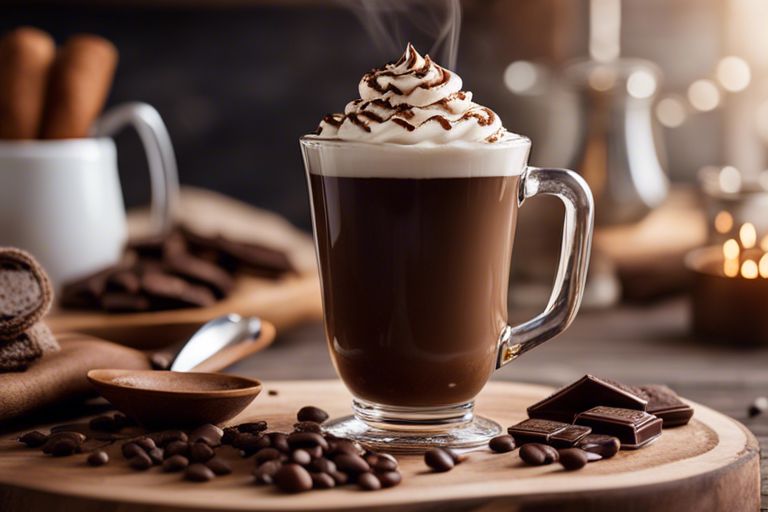









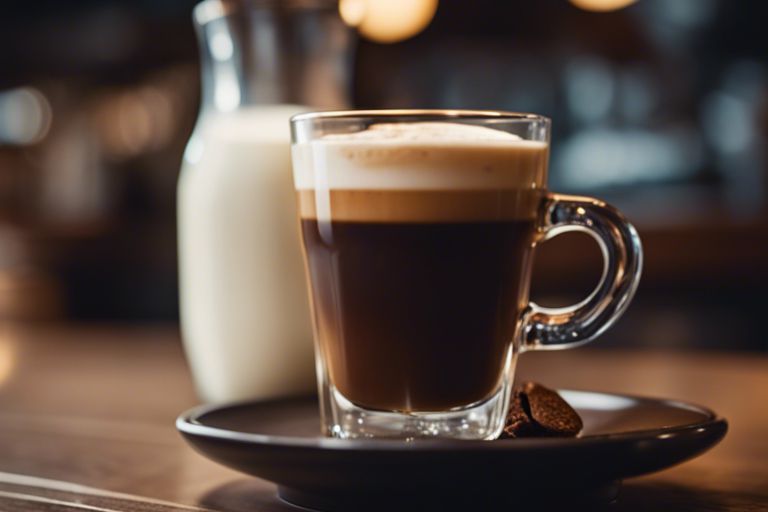
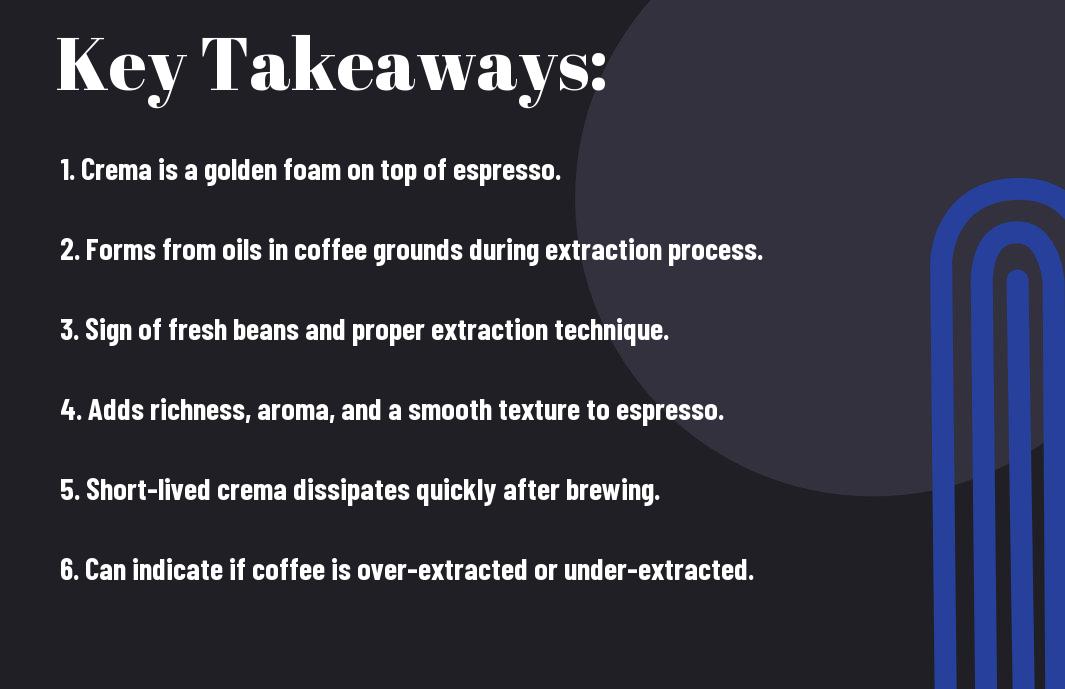
 In your forthcoming blog post, the chapter “Types of Coffee Crema” will be an necessary part of educating your readers about the diverse characteristics of this coffee element. Let’s explore the different types of coffee crema with a structured approach.
In your forthcoming blog post, the chapter “Types of Coffee Crema” will be an necessary part of educating your readers about the diverse characteristics of this coffee element. Let’s explore the different types of coffee crema with a structured approach.
